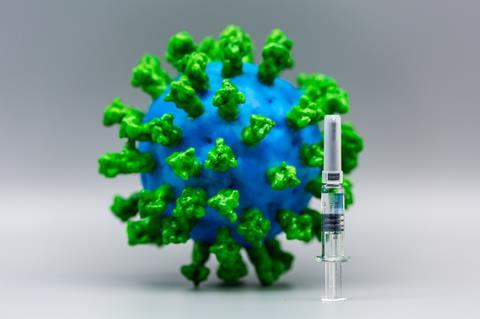Researchers have described the optimal timing for COVID-19 patients to take the antiviral, Paxlovid, to get the most benefit from the treatment, according to a study published April 16 in eLife.

The findings suggest that taking Paxlovid three to five days after COVID-19 symptoms emerge may maximise the drug’s ability to reduce viral loads, minimise viral spread and reduce viral rebound. They also indicate that broader use of Paxlovid during this window might be a powerful tool to help curb the spread of the SARS-CoV-2 virus that causes COVID-19 without the need for potential population-wide restrictions in the future, although additional studies will first be needed in this area.
Paxlovid is used in some parts of the world to protect people most at risk of hospitalisation and death from the virus. However, its uptake has been slow, and some patients have experienced rebounding viral growth after they stopped taking the medication.
Optimal timing
“Drugs like Paxlovid that hinder the replication, or spread, of a virus within patients can improve those patients’ outcomes and reduce their infectiousness to others. They may also be administered more widely to help curb pandemic waves,” says Zhanwei Du, Assistant Professor (Research) at the WHO Collaborating Center for Infectious Disease Epidemiology and Control, School of Public Health, University of Hong Kong, and a lead author on the study. “However, to get the most out of these drugs, we first need to understand the optimal timing for taking them and to encourage their wider distribution and uptake.”
To determine the best timing for Paxlovid treatment, Du and colleagues analysed health records from 208 patients hospitalised with mild to moderate COVID-19 in Hong Kong between January 6 and May 1, 2022. Half of the patients included in the analysis (104) were treated with Paxlovid, while the other half received no antiviral treatment.
The research team used data on the patients’ viral loads to create mathematical models of the virus’ behaviour both with and without Paxlovid treatment. Their modelling suggested that the drug reduced viral replication in patients by 90% overall, but its effectiveness varied depending on when it was administered to them.
Window of opportunity
Those who received Paxlovid treatment three days after their symptoms first appeared had only a 17% chance of experiencing rebounding viral growth after they stopped taking the drug. Treatment in this window also lowered their ability to infect others by 12%, while treatment after five days of symptoms emerging had a less positive effect on their ability to infect others. Patients treated fewer than three days after symptoms began were more likely to have rebounding viral growth after stopping treatment, and the treatment did not reduce their infectiousness to others.
“Our analyses suggest that the optimal treatment window to maximise Paxlovid’s ability to reduce infectiousness and minimise rebound viral growth is between three and five days after symptoms start,” says co-senior author Lauren Ancel Meyers, the Cooley Centennial Professor at the Departments of Integrative Biology, and Statistics and Data Science, at the University of Texas at Austin, US. “The data also suggest timely use of Paxlovid could help lower the risk of SARS-CoV-2 transmission to others.”
Resistance to drug
However, the authors note that the data do not currently account for the potential emergence of resistance to Paxlovid, which they say would need to be evaluated further before the drug could be used more widely.
“Fast-acting antiviral drugs like Paxlovid have the potential to reduce SARS-CoV-2 transmission while improving patient outcomes,” concludes co-senior author Benjamin Cowling, Professor, Chair of Epidemiology and co-Director of the WHO Collaborating Center for Infectious Disease Epidemiology and Control, School of Public Health, University of Hong Kong. “The development of global distribution programs that provide rapid and equitable access to antivirals could enhance our ability to combat COVID-19 as the virus and the landscape of immunity continues to evolve.”







No comments yet